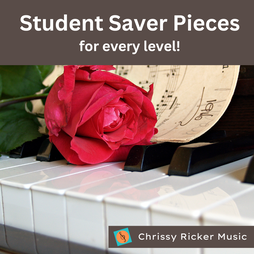
So today I am highlighting 3 of my favorite spring-themed freebies for you to enjoy with your students! I hope these bring a taste of spring to your studio in the coming weeks.
Keep reading to see more....
 We've been enjoying an early taste of spring here this week--the daffodils are blooming, the trees are budding out, and I say bring it on! So today I am highlighting 3 of my favorite spring-themed freebies for you to enjoy with your students! I hope these bring a taste of spring to your studio in the coming weeks. Keep reading to see more....
4 Comments
 Are you looking for ways to better motivate and engage every student in your studio? Today I am sharing a special guest post I wrote for the "Colourful Keys" blog! This article will show you how to easily customize a sample lesson plan to fit 4 unique student personality types that you might have in your studio right now. Many thanks to the Colourful Keys team for inviting me to contribute to their website! Click HERE to read the whole article.  Picture it: your student walks in with a sheepish grin and no music books in sight. Although your student is right on time for his lesson, his books, unfortunately, are not. What do you do? We’ve all been there -- and it can be frustrating to have our lesson plans derailed by a lack of books. However, instead of seeing this as a lost lesson, why not see it as an opportunity to focus on an activity that you and your student might not otherwise have time to do? In today’s post, I’ll be sharing 4 fun activities you can have prepared for those times when a student arrives for lessons without their music, with links to free resources you can download instantly! Keep reading to learn more….  Looking for a few new pieces to energize your students as we kick off the year? Today I am sharing a few favorite "student savers" from my own catalog. These are pieces that are always winners with my own students, and they are perfect to have on hand when a student needs a little boost! Ready to get some fresh ideas? Keep reading to see the list!  Christmas is just around the corner, and teachers and students alike are ready for a nice winter break. But that doesn't mean the final lesson of the year can't be both fun and productive! Today I am sharing 5 fun activities you can do with your students to end the year on a high note! Keep reading to see them all... |
AuthorChrissy Ricker is a pianist, teacher, and composer from North Carolina. These are her thoughts on teaching, composing, and all things music. Looking for teaching ideas related to a specific topic? Use the "search" feature or scroll down to see blog posts organized by category!
Archives
April 2024
Categories
All
|